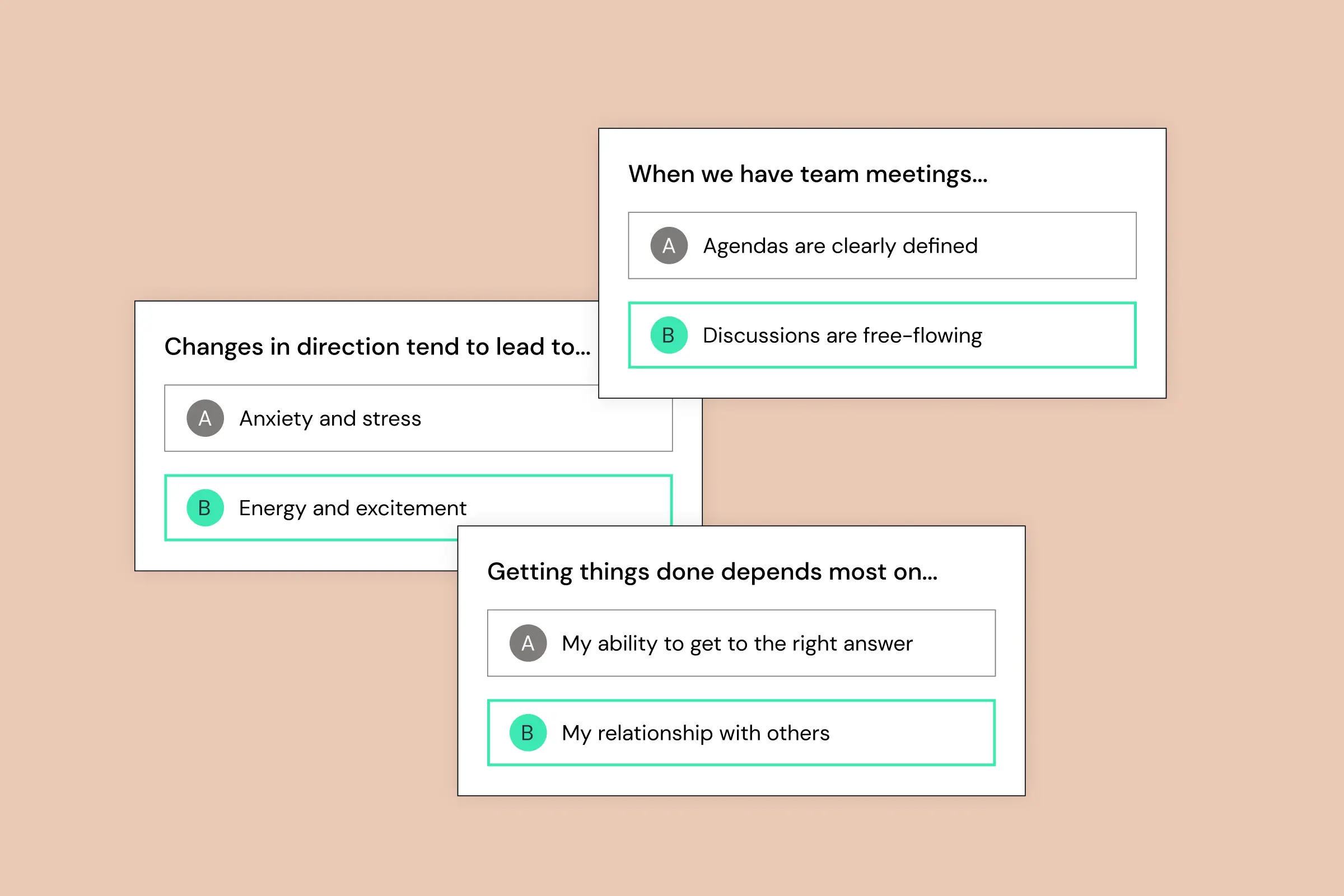Communicating
How does your team share information?
"The kinds of errors that cause plane crashes are invariably errors of communication." — Malcolm Gladwell
Contrary to the debates you see on LinkedIn, communication on a modern team isn't about the technologies that your team uses, or whether your team works remotely or in person. Communication is fundamentally about the norms your team has for how information flows from person to person.
While every team has its own idiosyncrasies, its communication style will fall into one of two archetypes.
Informal
teams thrive on spontaneous discussions and casual conversations, prioritizing flexibility and adaptability.
- You tend to ping each other or chat live when needed instead of waiting for a meeting or sending an email or written doc.
- Meeting preparation and follow-up work are lightweight. You don't always write down agendas, decisions, or action items.
- Institutional knowledge and team expertise live in people's heads rather than in written documentation.
Learn about the 8
Informal
team types.
Environments where innovation, speed, and personal communication are prioritized, e.g.,
- Creative contexts like advertising, design, and entertainment, where the free flow of ideas and less formal communication can spark more innovative outcomes.
- The fast-paced world of startups, where agility is crucial and informal teams can quickly adapt to changes, make swift decisions and pivot as needed, without being bogged down by rigid structures.
- The early stages of brainstorming and experimental research, where scientists and engineers can explore various hypotheses and creative solutions without being restricted by formal protocols.
Ordered
teams prefer well-defined communication channels, processes, and documentation.
- For important discussions, you prefer written communication and pre-existing meetings to ad hoc calls and Slack pings.
- Meetings are structured and have agendas. Decisions and action items are written down.
- Critical team knowledge is kept in documentation that is organized and kept up-to-date.
Learn about the 8
Ordered
team types.
Environments where precision, accuracy, and consistency are essential, e.g.,
- Regulated industries like finance and healthcare, where strict compliance rules require careful documentation.
- Large scale projects that involve many moving parts, like physical or software engineering projects.
- Roles where complex data management defines success, like data engineering and analysis.


.png)



































